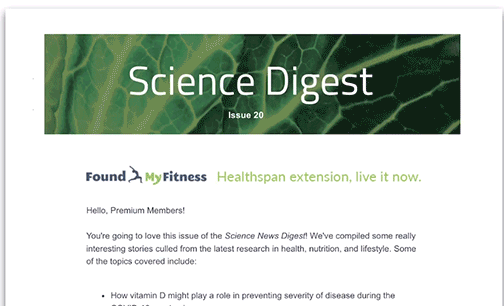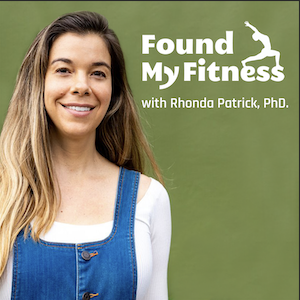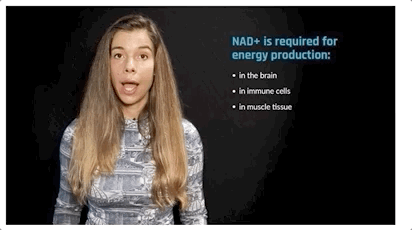The role of fasting-induced ketosis in stem cell activation and cell renewal | Valter Longo
Get the full length version of this episode as a podcast.
This episode will make a great companion for a long drive.
The Omega-3 Supplementation Guide
A blueprint for choosing the right fish oil supplement — filled with specific recommendations, guidelines for interpreting testing data, and dosage protocols.
A growing body of evidence suggests that fat plays a role in the activation of stem cells. Fasting generates molecules such as fatty acids, ketone bodies and glycerol, providing a favorable environment for stem cell activation and renewal. While there is much to understand about the mechanistic details of the fasting-mimicking diet, the clinical benefits are clear. In this clip, Dr. Valter Longo discusses how fasting can play a role in the activation and renewal of stem cells by altering the metabolic profile.
Rhonda: And that is, at least, with the hematopoietic stem cells, like I'm not sure about with that, you know, others stem cells and other tissues. But I know that when they're quiescent, when they're not dividing, they are glycolytic, meaning they use glucose for energy because they don't want to damage themselves with reactive oxygen species being generated as a byproduct of mitochondrial function, right? But I do know that when they come out of quiescence, and they come out to either self-renew or differentiate into progenitor cells, oxidative phosphorylation becomes their source of making energy. And so, I'm wondering what's the signal... I know you've published some studies on looking at different signaling pathways that are required to cause this hematopoietic stem cells self-renewal mechanisms, but I'm wondering if possibly just not having the glucose available, and having just the fatty acids, the source of energy that can only be used by mitochondria, if that's somehow also is playing a role in making them self-renew more, or differentiate more?
Valter: I think so, and this is the work by David Sabatini, and others at MIT, and they're doing work on the fat, and the role of fat and fatty acids, etc., and self-renewal and the activation of stem cells, particularly in the gut. So, yeah, there seems to be a role for fat in that, and I think we're still beginning to understand it. I think, obviously, with fasting, you produce fat, and you produce fatty acids, and glycerol, and ketone bodies. So, the environment is there, and, you know, we need to maybe understand more, how each component that is changing is affecting the program, so yeah. So, we made the decision to try to, I think, things are going very slow, and we've always been very interested in people that have a problem now, right, instead of, you know...
Rhonda: Right.
Valter: A lot of people are always like, wow, in 20 years we'll have this. And we always said, you know, "There's people who have cancer now, they have multiple sclerosis now, so what do you do for them," right? And so, our decision has been always understand enough the mechanisms to be able to not, or minimize the chance of making mistakes, get to the clinical trial, and then, go back and fill it in, right?
Rhonda: Mm-hmm, yeah.
Valter: Rather than step, by step, by step, by step, you know, and then it'll take you 15 years to get to clinical trial.
Rhonda: Right. Yeah.
Valter: So, I mean, I'm not criticizing the other method, but I'm just saying that for us it has been get the mechanism, get enough mechanism, move to the clinical trial, and then make sure it's safe, and...
Rhonda: It's been fantastic. I mean, you've been able to translate so many different studies, I mean, it's really quite phenomenal. I'm just, sort of, thinking, in fact I just thought about it when you're mentioning the ketone bodies too. Well, ketone bodies are more, if you think about the stem cells, and if they need energy to differentiate or self-renew, ketone bodies would actually provide a very energetically favorable source because it takes less oxygen, actually, to convert beta-hydroxybutyrate into Acetyl-CoA, as opposed to glucose into pyruvate. So, if you think about it, it's more energetically favorable to have ketone bodies, and so, maybe it also helps just because it takes less energy to do this process. I mean, you know, it's possible, but...
Valter: Yeah. I think, there's also mechanisms. Again, the fasting imposes this new metabolic profile, and the new metabolic profile requires the stem cells for this regeneration that I mentioned. So, if you got to get rid of the health of your liver, let's say that you fast for a month-and-a-half, right? Then you must, you will produce tons of fatty acids and tons of ketone bodies, and that environment is gonna require the stem cell to be renewing, and being standing by for the day where you need to make a new liver, essentially, or health for the liver, right? So, this is why, I think, it's all a part of a coordinated response, where, you know, you have the fat... And by then, the fat is one of the few abundant sources of energy also for the stem cells, so they really have no choice but to be ready to respond to fat metabolites so that they can self-renew. Because there's not much sugar around, and the brain needs the sugar, by the way, right? So, the brain needs a lot of the sugar that is available, a lot of is made by gluconeogenesis, so it makes sense...
Rhonda: Red blood cells are needed since they have no mitochondria.
Valter: Right. And so it makes sense that you would have a system like that, that is fat in fatty acid and ketone body...
Rhonda: Yeah, yeah, absolutely.
Acetyl coenzyme A is a molecule that was first discovered to transfer acetyl groups to the citric acid cycle (Krebs cycle) to be oxidized for energy production. Now it is known to be involved in many different pathways including fatty acid metabolism, steroid synthesis, acetylcholine synthesis, acetylation, and melatonin synthesis.
A chemical produced in the liver via the breakdown of fatty acids. Beta-hydroxybutyrate is a type of ketone body. It can be used to produce energy inside the mitochondria and acts as a signaling molecule that alters gene expression by inhibiting a class of enzymes known as histone deacetylases.
A molecule composed of carboxylic acid with a long hydrocarbon chain that is either saturated or unsaturated. Fatty acids are important components of cell membranes and are key sources of fuel because they yield large quantities of ATP when metabolized. Most cells can use either glucose or fatty acids for this purpose.
A metabolic pathway in which the liver produces glucose from non-carbohydrate substrates including glycogenic amino acids (from protein) and glycerol (from lipids).
A sugar-alcohol compound that is the backbone of the triglycerides.
An immature cell that can develop into all types of blood cells, including white blood cells, red blood cells, and platelets. Hematopoietic stem cells are found in the peripheral blood and the bone marrow and give rise to both the myeloid and lymphoid lineages of blood cells. The process by which blood cells are produced is known as hematopoiesis.
Myeloid cells include monocytes, macrophages, neutrophils, basophils, eosinophils, erythrocytes, and megakaryocytes to platelets. Lymphoid cells include T cells, B cells, and natural killer cells.
A metabolic pathway in which organisms produce ketones. Ketogenesis occurs primarily in the mitochondria of liver cells via the breakdown of fatty acids and ketogenic amino acids. Insulin is the major hormonal regulator of ketogenesis; however, glucagon, cortisol, thyroid hormones, and catecholamines can induce greater breakdown of free fatty acids, thereby increasing the substrates available for use in the ketogenic pathway. The primary ketones used by the body for energy are acetoacetate and beta-hydroxybutyrate.
Molecules (often simply called “ketones”) produced by the liver during the breakdown of fatty acids. Ketone production occurs during periods of low food intake (fasting), carbohydrate restrictive diets, starvation, or prolonged intense exercise. There are three types of ketone bodies: acetoacetate, beta-hydroxybutyrate, and acetone. Ketone bodies are readily used as energy by a diverse array of cell types, including neurons.
Tiny organelles inside cells that produce energy in the presence of oxygen. Mitochondria are referred to as the "powerhouses of the cell" because of their role in the production of ATP (adenosine triphosphate). Mitochondria are continuously undergoing a process of self-renewal known as mitophagy in order to repair damage that occurs during their energy-generating activities.
The process of generating energy that occurs when mitochondria couple oxygen with electrons that have been derived from different food sources including glucose, fatty acids, and amino acids.
Undifferentiated descendants of stem cells. Unlike stem cells, progenitor cells can differentiate into cells of a particular lineage only and they cannot divide and reproduce indefinitely. Progenitor cells show potential in the fields of plastic and reconstructive surgery, ophthalmology, and heart and blood disorders.
In a state or period of inactivity or dormancy.
Oxygen-containing chemically-reactive molecules generated by oxidative phosphorylation and immune activation. ROS can damage cellular components, including lipids, proteins, mitochondria, and DNA. Examples of ROS include: peroxides, superoxide, hydroxyl radical, and singlet oxygen.
A related byproduct, reactive nitrogen species, is also produced naturally by the immune system. Examples of RNS include nitric oxide, peroxynitrite, and nitrogen dioxide.
The two species are often collectively referred to as ROS/RNS. Preventing and efficiently repairing damage from ROS (oxidative stress) and RNS (nitrosative stress) are among the key challenges our cells face in their fight against diseases of aging, including cancer.
A cell that has the potential to develop into different types of cells in the body. Stem cells are undifferentiated, so they cannot do specific functions in the body. Instead, they have the potential to become specialized cells, such as muscle cells, blood cells, and brain cells. As such, they serve as a repair system for the body. Stem cells can divide and renew themselves over a long time. In 2006, scientists reverted somatic cells into stem cells by introducing Oct4, Sox2, Klf4, and cMyc (OSKM), known as Yamanaka factors.[1]
- ^ Takahashi, Kazutoshi; Yamanaka, Shinya (2006). Induction Of Pluripotent Stem Cells From Mouse Embryonic And Adult Fibroblast Cultures By Defined Factors Cell 126, 4.
Member only extras:
Learn more about the advantages of a premium membership by clicking below.
Get email updates with the latest curated healthspan research
Support our work

Every other week premium members receive a special edition newsletter that summarizes all of the latest healthspan research.
Fasting News
- Alternate-day fasting outperforms other intermittent fasting methods in weight loss and cholesterol reduction, according to a systematic review and meta‐analysis.
- Intermittent fasting three nonconsecutive days per week coupled with regular exercise promotes more weight loss than daily calorie restriction.
- Fasting-based dietary strategies, including intermittent fasting and time-restricted eating, show slight superiority over calorie restriction for promoting weight loss and improving insulin sensitivity.
- Cyclic fasting-mimicking diet in cancer treatment: Preclinical and clinical evidence
- Mild intermittent fasting can have a surprisingly negative effect on immunity: skipping breakfast led to a 90% drop in white blood cell count.






